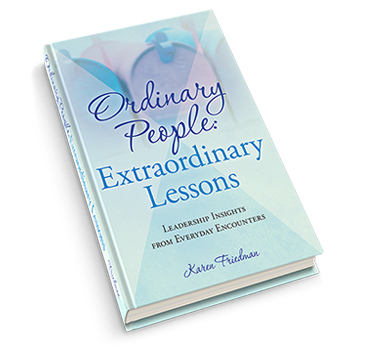On a recent vacation, my husband and I took a few tours to learn more about the history and culture of the land. The difference between an exceptional tour guide and a mediocre tour guide was immediately clear. The mediocre guides were knowledgeable and provided interesting information, dates, facts, and statistics. The exceptional guides were also well versed, but weaved stories and anecdotes into their narratives making it more engaging, memorable, and kept our attention.
Think about great teachers or speakers you remember. Like a notable tour guide, you may recall a few statistics they shared, but you probably remember them because of the stories they told. Like great tour guides who work on crafting and sharing interesting stories, storytelling is also a powerful tool in business for many reasons.
- Connection
- Stories create an emotional connection between speakers and listeners which helps build relationships with customers, employees, and prospects.
- Memorable
- Stories provide context and make sense of complex ideas which is why people remember stories more than they recall data and facts.
- Engaging
- Whether delivering a presentation, marketing campaign or trying to convey your point of view, sharing stories and anecdotes that support facts and information engages audiences and captures attention.
- Differentiation
- Years ago, I attended a medical presentation where five liver surgeons had to explain a difficult procedure. Thinking the first four were bland and boring, I tuned out but blamed it on my lack of subject comprehension. Yet the fifth speaker hooked me instantly. Sharing pictures, videos, and brief stories about patient procedures, he simplified technical information and made it understandable.
- Trust
- Business relationships are built on trust. Sharing stories that include lessons learned from mistakes and vulnerabilities demonstrate transparency and authenticity which can lead to loyalty as people become more vested in your message.
Yet, often when I suggest speakers incorporate storytelling into their communications, many push back, claiming it’s not their strength or they don’t have time. I disagree. No matter who you are, you are a storyteller. You have been sharing stories since you were born on the playground, after summer vacations and at home with your family.
Look no further than You Tube, TikTok, or Facebook to understand how stories have transformed the way we communicate today. Content that includes videos, pictures and music allow companies to connect emotionally which fuels everything from buying habits to political opinions to the way you wear your hair. Like an old-fashioned story that keeps listeners on the edge of their seats, the way you tell your story will shape outcomes.
As in any profession, becoming an effective storyteller takes practice. That became even more evident to me this holiday season when my friends and I took a unique walking tour (amazingnycwalks.com) in New York’s Greenwich Village. Here are a few qualities you can employ at work that made the tour guide an effective storyteller.
- Enthusiasm
- The guide’s genuine enthusiasm for his subject was contagious inspiring questions and curiosity from the tour group.
- Adaptable
- Being able to articulate thoughts clearly is essential. Being able to adapt your style to the different levels of audience understanding helps everyone follow the story.
- Creativity
- From time to time, this tour guide would pull out his phone and show us pictures of what important buildings looked like in years past. This provided context and brought his stories to life.
- Structure
- Crafting a well-structured story with a clear beginning, middle and end is essential when delivering any kind of speech or presentation. It will make you easier to follow
- Presence
- Good eye contact, expressive body language and a strong stage presence can transform a dull presentation or tour into a more captivating experience for others.
In summary, storytelling in business is not just about entertaining listeners. It’s a strategic tool that helps businesses communicate value and connect with people on a more human level. Those are the presentations and tours we remember.






